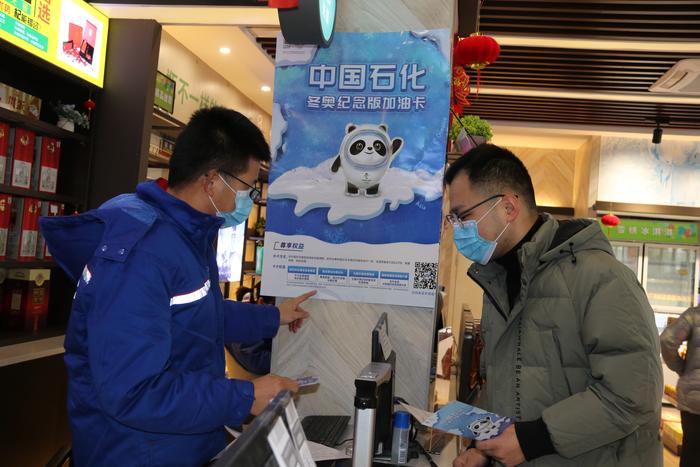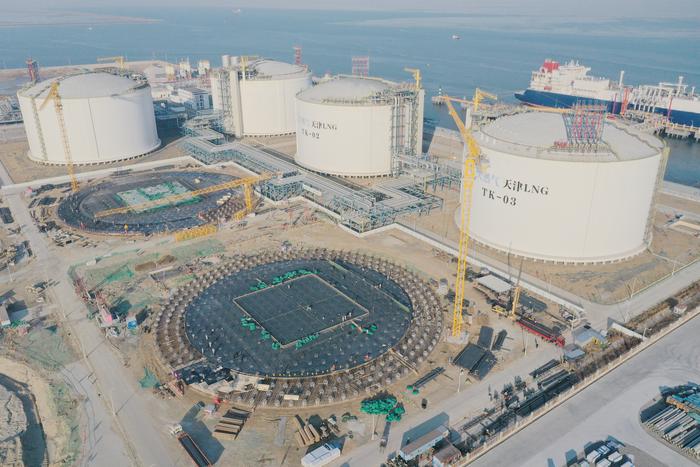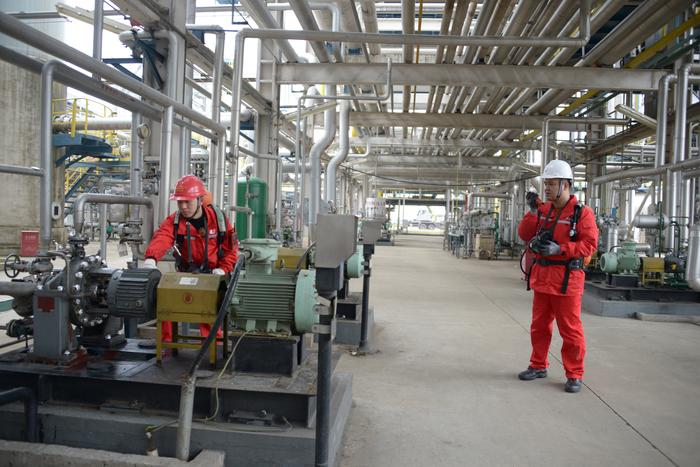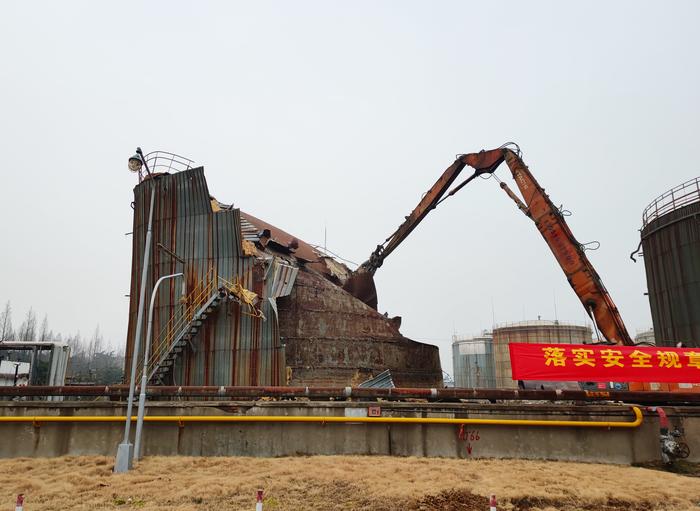|
| 2021-01-06 来源: 中国石化新闻网 |
| 石化新闻 |
中国石化新闻网讯 据1月1日Rigzone报道,液化天然气贸易商预计,在2019新冠肺炎疫情导致价格大幅波动之后,2021年液化天然气需求将迅速复苏。 因主要进口国天气变冷、主要生产中心停电以及全球航线拥堵等因素,亚洲现货价格已推至2014年以来的最高水平,这也是4月份创纪录低点的六倍多,使亚洲液化天然气成为2020年表现最好的主要大宗商品。 由于各国都在寻找廉价、可靠和更清洁的煤炭替代品,对这种用于供暖和发电的燃料的需求增长速度快于其他任何化石燃料。疫情使2020年的增长脱轨,中国和印度正在成为主要的需求来源。 华盛顿贝克博茨律师事务所合伙人Tom Holmberg表示:“许多国家都在寻求进口液化天然气,我仍然认为我们将看到液化天然气市场的增长。” 以下是2021年可能对液化天然气市场产生影响的主要几方面因素。 一是需求复苏不平衡。根据彭博社汇编的船舶跟踪数据显示,2020年全球液化天然气进口量大致与前一年持平。这对于一个自2016年以来年增长率达10%的行业来说是一个巨大的冲击。不过,预计全球天然气需求在2021年将恢复增长。埃森哲(Accenture)能源业务董事总经理马纳斯·萨塔帕蒂(Manas Satapathy)表示,LNG需求约占总需求的10%,根据巴基斯坦、印度和孟加拉国的表现,需求可能会更快反弹。 自疫情最严重时期以来,亚洲的液化天然气产能大多已恢复,该地区的液化天然气需求明年将大幅反弹。在2020年的最后一天,亚洲液化天然气现货价格(日韩基准)自2014年4月以来首次反弹至每百万英热15美元以上。Holmberg称:"亚洲需求增长速度之快令人兴奋。" 不过,欧洲的情况则大不相同,各国都在努力应对新出现的感染病例激增和能源需求的削弱。萨塔帕蒂表示,2021年,非洲大陆将迎来缓慢的复苏。 此外,因欧洲主要依赖于储存和管道天然气运输,阿塞拜疆的一条新管道和即将完工的北溪2号项目可能会推动天然气运力增长。 二是供应方面问题。从澳大利亚到卡塔尔到马来西亚的LNG出口设施的计划外维护,导致今年下半年市场比预期更为紧张。巴拿马运河航行的延误限制了对亚洲的供应。如果这些供应中断持续到2021年,那么价格可能仍将远高于当前水平。 占全球液化天然气出口60%的天然气出口国论坛预计,2021年供应量将从2020年的2%升至2.5%,增长6%至7%。并在其短期展望中表示,与气态燃料进口相比,液化天然气贸易对2021年危机的抵御能力较高。 据活跃在液化天然气领域的两家最大的贸易公司Vitol SA和托克集团有限公司表示,2021年液化天然气市场可能仍将供大于求。除此之外,他们预计市场将趋紧。 与此同时,交易员们将密切关注美国液化天然气买家们2021年是否会放弃任何货物。今年夏天,在疫情冲击欧洲和亚洲的现货价格后,约有200批货物被取消。尽管2021年这种情况不太可能重演,但交易员预计一些订单的取消将有助于平衡市场。 随着新设施投入使用,美国天然气出口每月都在刷新纪录。但需求的任何下降都可能迫使供应商关闭出口。该国已经成为一个摇摆不定的供应国,因为它的合同允许被取消,这使出口能够迅速对动荡的市场做出反应。 三是能源转型升级方面。环保人士越来越把天然气视为主要的污染源。在多年专注于煤炭和石油之后,他们开始将注意力转向如何消除所有化石燃料的排放。这一转变促使供应商、买家和运输商考虑采取绿色行动,清理与甲烷和温室气体排放有关的活动。 Fusco表示,液化天然气货物生命周期中一半的碳足迹来自上游板块。这家液化天然气生产商正在推动提高燃料碳排放的透明度,并表示:“我们的客户将希望确保他们能够验证和审核我们告诉他们的碳排放特征。” 今年,全球首个要求具有碳排放声明的供应协议已签署,与此同时,所谓的碳中和货物开始进入中国和日本,各国制定了有效实现零排放的宏伟目标。 王佳晶 摘译自 Rigzone 原文如下: LNG Market Readies for Swift Recovery Liquefied natural gas traders anticipate a swift demand recovery in 2021 after a year in which the coronavirus pandemic prompted dramatic price swings. Colder weather in key importing nations, outages at major production hubs and congestion along global shipping routes already have combined to push spot prices in Asia to the highest level since 2014. That’s a more than sixfold jump from a record low in April, making Asian LNG the best performer among major commodities in 2020. Demand for the fuel used in heating and power generation is growing faster than for any other fossil fuel as nations look for a cheap, reliable and cleaner alternative to coal. The pandemic derailed that growth for 2020, but China and India are emerging as major sources of demand. “A lot of countries are looking to import LNG,” Tom Holmberg, a partner at law firm Baker Botts LLP in Washington D.C., said by phone. “I still think we are going to see growth in the LNG market.” Below are the key areas likely to shape the market in 2021: Uneven Demand Recovery Global LNG imports in 2020 were roughly equal to the previous year, according to ship-tracking data compiled by Bloomberg. That was a big disappointment for an industry that has enjoyed 10% annual growth rate since 2016. However, global gas demand is expected to resume growth next year. LNG demand, which makes up roughly 10% of the total, may rebound even faster, depending on how Pakistan, India and Bangladesh perform, said Manas Satapathy, a managing director in Accenture’s Energy business. Shipments of the fuel into Asia have mostly recovered since the height of the pandemic, and the region’s LNG demand will rebound sharply next year, according to S&P Global Platts. On the last day of 2020, spot Asian LNG price - the Japan-Korea Marker benchmark - rallied above $15 per million British thermal units for the first time since April 2014. “It has been interesting to see how quickly Asian demand seems to have ramped up,” Holmberg said. The picture in Europe is very different as countries grapple with a new surge of infections and lockdowns that sap energy demand. The continent is headed for a “very neutral recovery” in 2021, according to Satapathy. Europe mainly relies on storage and pipeline gas shipments, which may be boosted with flows from a new link from Azerbaijan and the controversial Nord Stream 2 project that’s nearing completion. Supply Woes Unplanned maintenance at LNG export facilities from Australia to Qatar to Malaysia has led to a tighter than expected market in the second half of the year. And delays in navigating the Panama Canal curbed supplies to Asia. If these disruptions persist well into the year, then prices could remain elevated well above current levels. The Gas Exporting Countries Forum, which represents 60% of global LNG exports, expects supply to climb by 6% to 7% next year, up from 2% to 2.5% in 2020. LNG trade was much more resilient to this year’s challenges than imports in the fuel’s gaseous form, the group said in its short-term outlook. The market will likely remain oversupplied next year, according to Vitol SA and Trafigura Group Ltd., two of the biggest trading houses active in LNG. Beyond that they expect the market to tighten. More Cancellations? Traders will be watching to see if buyers of U.S. LNG scrap any cargoes next year. About 200 cargoes were canceled in the summer after the pandemic hit spot prices in Europe and Asia. While there’s unlikely to be a repeat of that in 2021, traders do expect some cancellations to help balance the market. American gas exports are rising to fresh records every month as new facilities come online. But any dip in demand could force suppliers to shut-in cargoes. The nation has become a swing supplier because its contracts allow for scrapping deliveries, which enables exports to quickly respond to volatile markets. Green Ambition Environmentalists are increasingly looking at natural gas as a major polluter. After years of focusing on coal and oil, they’re turning their attention to how to zero out emissions from all fossil fuels. That shift has suppliers, buyers and shippers thinking green initiatives to clean up activities linked to methane and greenhouse gas emissions. Half of the carbon footprint in the life cycle of an LNG cargo comes from upstream, Fusco said. The LNG producer is pushing for more transparency on carbon emissions for the fuel. “Our customers are going to want to be sure that they can validate and audit what we’re telling them our carbon signature is,” he said. The world’s first supply contract that required a declaration of emissions was signed this year while so-called carbon-neutral cargoes started flowing to China and Japan as nations outline ambitious targets to effectively zero out emissions. |








